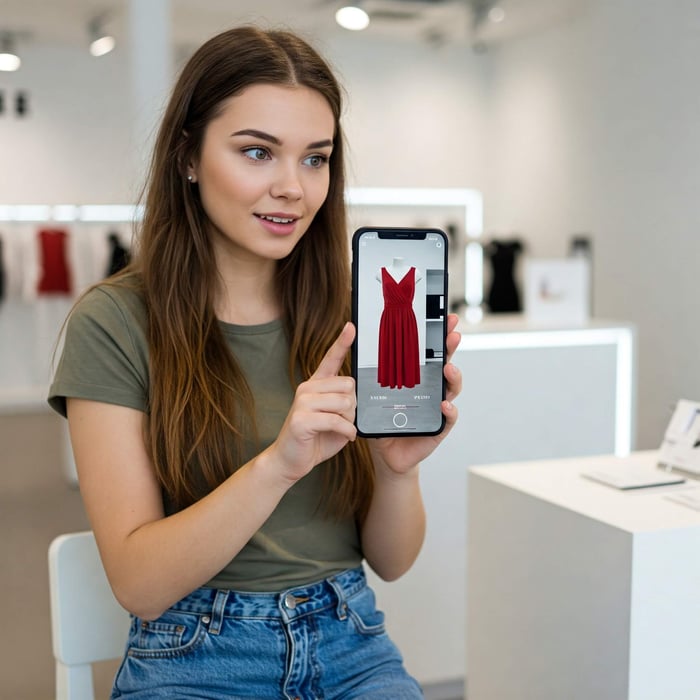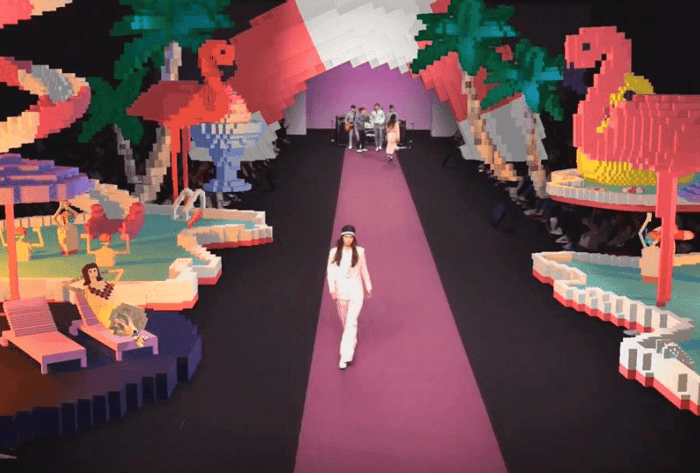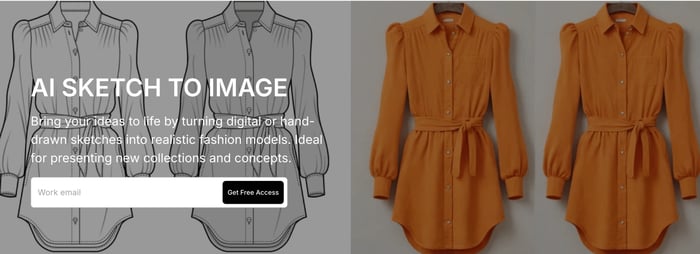Augmented Reality Fashion: How AR is Transforming the Future of Shopping and Style
Table of Contents
Fashion has always been a dynamic reflection of culture, novelty, and creativity. As we move into the digital age, augmented reality in fashion is taking center stage in transforming how we experience clothing, style, and shopping. This innovation is improving how consumers try on clothes, how brands interact with the public, and how fashion is designed and marketed. Augmented reality fashion involves superimposing digital elements (such as clothing, accessories, or design elements) over real-world images through a camera or device screen.
Whether through a smartphone, tablet, or smart mirror, augmented reality allows people to see how an outfit would look on them without physically trying it on. To illustrate, the 2017 viral game Pokemon Go used this augmented reality technology to display tiny creatures in the real world using a phone's camera. The result is a more interactive, personalized, and immersive experience.

We shouldn't confuse virtual reality with augmented reality, as they are two different things. Virtual reality includes all those technologies that hide the real environment, showing you only a completely digitally created environment. With this type of reality, you can't see what's in front of you, to the sides, or behind you. Instead, you can see virtual recreations of the environment or avatars that recreate virtual images of the person you're talking to, unlike augmented reality, where you actually see your real surroundings.
What Is Augmented Reality Fashion?
Augmented reality fashion is the application of AR technology in the fashion industry to enhance both the design and consumer experience. Using this technology, a user sees their real image enhanced with virtual garments or effects, creating a seamless combination of both worlds. AR in fashion can take many forms: virtual try-ons for clothes, shoes, and accessories; interactive store displays; digital fitting rooms; and even AR fashion shows. That's why this technology isn't just a novelty; it's a practical tool that enables shoppers and brands to make better decisions, reduce waste, and improve accessibility.

One of the most popular and impactful uses of augmented reality fashion is the virtual try-on. Many e-commerce platforms now offer tools that let customers see how a garment will look on them using their camera. These systems use facial and body recognition to fit clothing over the user’s image in real time, adjusting for movement and scale. This feature has revolutionized online shopping because shoppers no longer need to rely on static photos or guesswork. They can visualize the fit, color, and style of items on their own bodies, which leads to increased confidence in purchasing decisions. As a result, virtual try-ons are reducing return rates and enhancing customer satisfaction.
Enhancing the In-Store Experience
AR is not limited to online platforms. In physical retail stores, augmented reality fashion is enhancing the shopping experience with smart mirrors, AR displays, and digital styling assistants. Smart mirrors allow customers to try on multiple outfits virtually, compare looks side by side, and even request alternative sizes or styles without leaving the fitting room.
These innovations not only make the shopping experience more enjoyable but also more efficient. Retailers benefit from higher engagement and can gather data about customer preferences, improving both service and inventory management.
Personalization and Engagement
Augmented reality fashion creates a more personalized experience by allowing consumers to tailor the shopping journey to their own tastes and needs. With AR, users can experiment with styles, colors, and combinations they might not have considered before, all in a risk-free environment.
Brands can also use AR to create immersive storytelling. For example, pointing a smartphone at a product tag might launch a video about the garment’s inspiration, its sustainability journey, or a behind-the-scenes look at the design process. This layer of interaction helps forge a stronger emotional connection between the brand and the consumer.

AR also supports the growing demand for sustainability in fashion. By offering digital previews and minimizing the need for physical samples, it helps reduce waste and overproduction. Designers can showcase collections digitally, test public interest, and adjust before committing to large-scale production. This not only reduces environmental impact but also saves time and resources, consumers benefit from making more informed choices, and brands can align better with their audience’s values and expectations.
Fashion Education and Augmented Reality
Beyond shopping, augmented reality is becoming a valuable tool in fashion education. Design students can visualize their work in 3D, experiment with materials and patterns, and present concepts in interactive formats. AR allows them to test ideas instantly, without needing access to costly physical materials or facilities. Institutions and educators are beginning to adopt AR as part of a modern design curriculum, preparing students to work in an industry that is increasingly digital and tech-integrated. This hands-on innovation is bridging the gap between traditional craftsmanship and future-ready design thinking.
Fashion events are also embracing augmented reality fashion to reach global audiences and create unforgettable experiences. Brands are producing AR runways, where viewers can see garments in 3D from any angle, or even try them on through their devices. This shift not only democratizes access to exclusive events but also adds a layer of excitement and creativity. Audiences can engage with fashion shows in real time, explore designs up close, and interact with virtual elements that bring the collection’s concept to life.
Modelia and the Power of AR Visualization
A great example of innovation in this space is Modelia, a platform that uses digital visualization to help designers and brands showcase their clothing in lifelike detail. Through AR features, Modelia allows users to see how garments will look on virtual models, create high-quality visuals without traditional photoshoots, and adapt designs in real time.
Modelia bridges the gap between imagination and execution, giving designers more control and flexibility while offering customers a clearer, more engaging view of the product. As AR technology evolves, platforms like Modelia will play a key role in shaping how fashion is presented and consumed.

Try now virtual try-on with Modelia
Challenges and Future Considerations
While the possibilities of augmented reality fashion are vast, there are still challenges to address. Ensuring accuracy across different body types, creating realistic garment simulations, and maintaining data privacy are important concerns. Additionally, brands must be careful not to over-rely on technology at the expense of genuine human interaction. AR should enhance the fashion experience, not replace the emotional and tactile connection that clothing can provide.
Looking ahead, we can expect AR to become even more seamless, accessible, and intelligent. As technology improves, augmented reality fashion will move beyond novelty and become an essential part of how we shop, design, and express ourselves.
Final Thoughts: Augmented Reality Fashion as the New Standard
Augmented reality fashion is a growing reality that is changing the face of the industry. By making fashion more interactive, inclusive, and sustainable, AR offers benefits to both brands and consumers alike. From virtual try-ons and immersive storytelling to enhanced education and sustainable practices, AR is expanding what is possible in fashion. As we step into this new digital era, those who embrace augmented reality fashion will not only stay ahead of trends, they will help define them.
Join our community and get exclusive content, must-know tips, and early access to updates straight to your inbox with our newsletter.
How would you rate this article:
Related Articles
- Modelia vs Fashn.ai
- How to Dress for a Job Interview: Professional Outfits That Make an Impact
- How Virtual Try-On Technology Enhances Your Online Shopping Experience
- Best AI Model Studio Software for 2025
- 5 Free AI Face Swapping Online - Best Tools
- Shopify Conversion Rate Optimization Guide
- How to Get Your First Sales on Shopify Fast
- Fashion Mood Board Ideas to Spark Your Creativity
- Sketch to AI Art: How Designers Are Creating Digitally
- The Rise of AI-Generated Shoes in Modern Design


